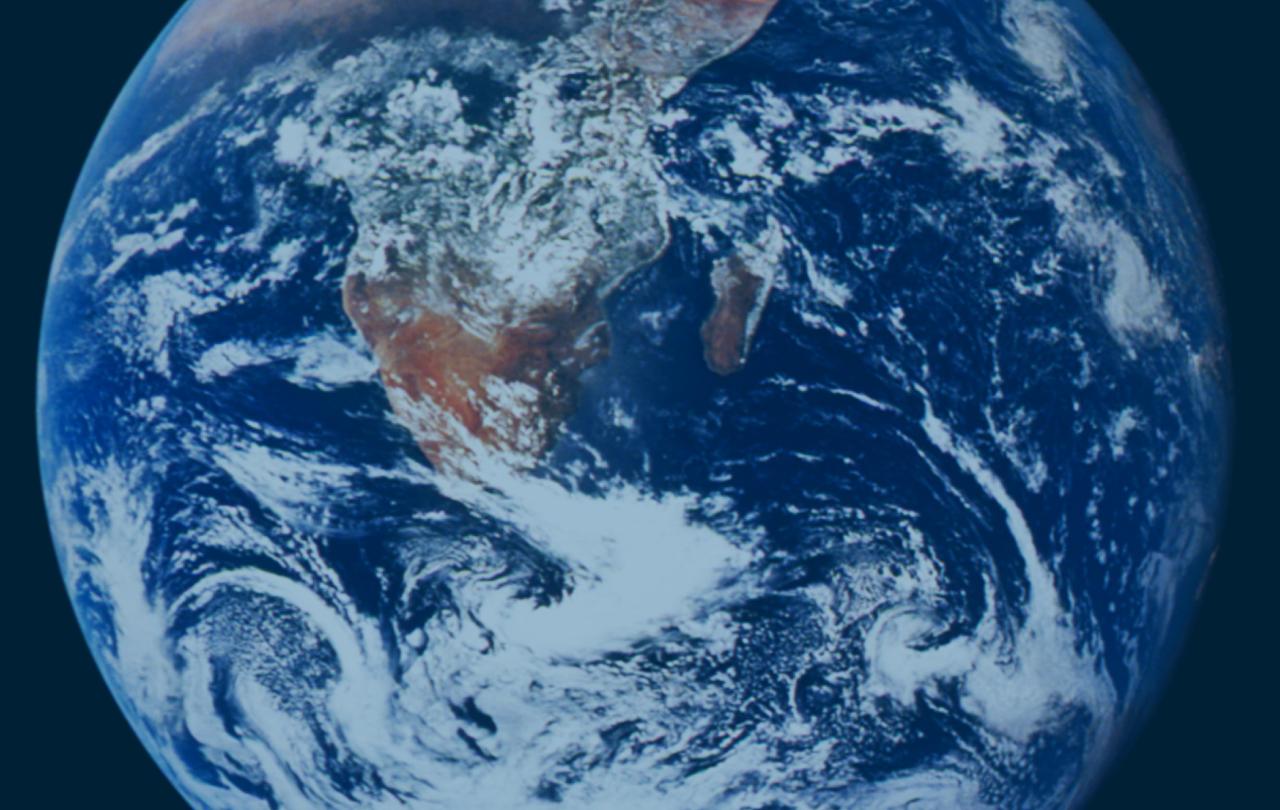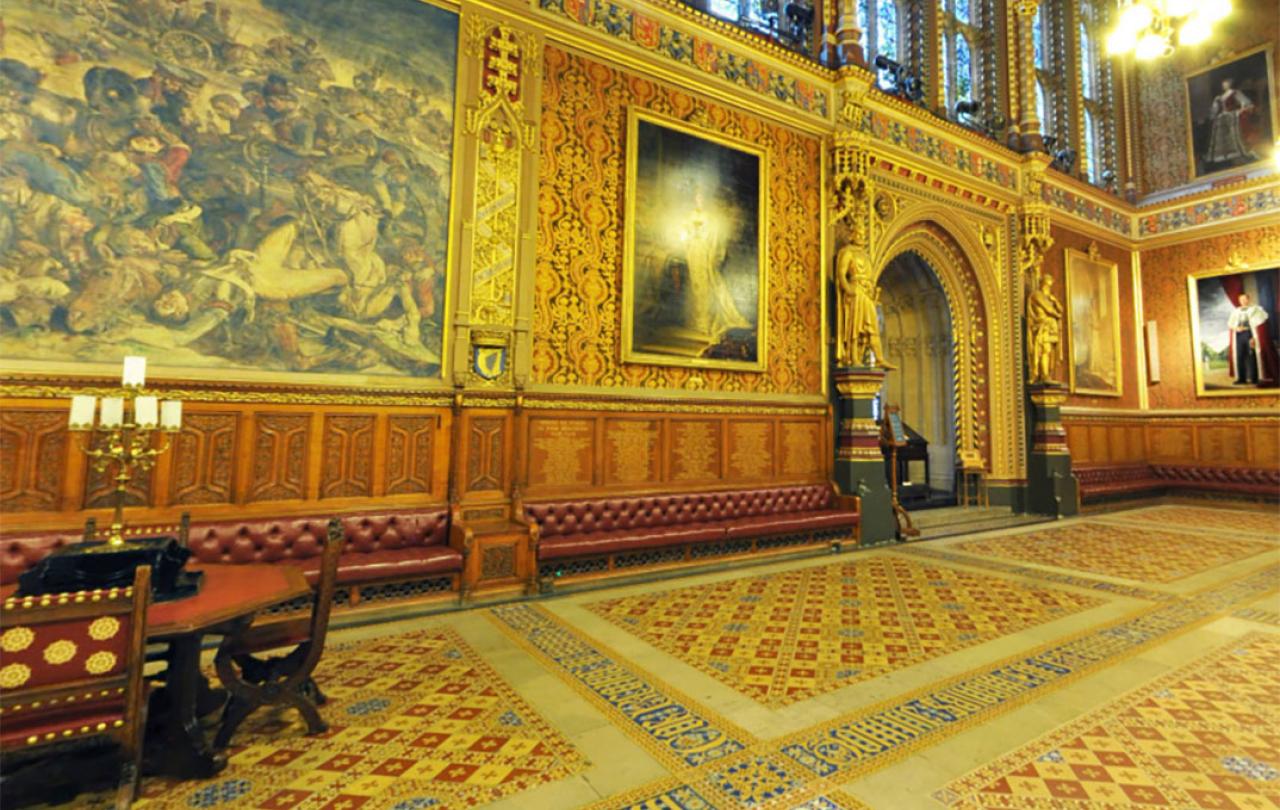
In 1972 the United Nations commissioned a report called Only One Earth: The Care and Maintenance of a Small Planet. Its authors chose a cover image which captured the earth from space. The bright blue marble-like planet sits majestically against the black background of the vast universe. The beauty and simplicity of the image was a reminder of the unique habitat we share on this planet and the need to care for it.
Over fifty years after the authors raised concerns about a future ecological crisis, we do not find ourselves in any less critical circumstances. Average temperatures around the globe continue to rise, deforestation and pollution of water carries on and the land still suffers from over-farming and the use of harmful chemicals. These are only a few of the ways the planet has suffered.
The tone of the book, and the tone of the dialogue since then, often depicts environmental issues as a problem to be fixed. Rather than changing our own habits, many seek to maintain our current quality of life by coming up with green solutions that satisfy our levels of consumption.
The trouble with this kind of thinking is that we can reduce the beautifully complex and dynamic ecology of our world to a problem that requires a technical solution. The environment becomes common matter or stuff that can be used as a commodity to be bought, sold or traded on the market. This promotes the idea that the world around us is nothing more than material to be mastered through technological innovations by the ingenuity and determination of the human will. But is it just a matter of time before advanced technologies will solve all our environmental problems? Or is it possible that reframing the environmental crisis through a theological lens could help us see that the problem might not only be technology or industrialization, but that it might be something deeper in our souls?
Looking at creation through a different lens
In 2014 Pope Francis wrote an encyclical (a letter to the Catholic Church) called Laudato Si (‘Praise to you’). The title comes from a song of St. Francis of Assisi to celebrate creation - ‘Praise be to you, my Lord, through our Sister, Mother Earth, who sustains and governs us, and who produces various fruit with coloured flowers and herbs.’ The saint’s hymn of praise celebrates creation as a living being, a partner, a sister, a mother that sustains us and reveals the glory of God. And this is what Pope Francis sets out to remind his readers—that creation is not merely a commodity to be used or a problem to be solved. Instead, the natural world is sacred because it was created by God, is sustained by God, and is filled with his divine glory.
Francis writes,
‘We have come to see ourselves as her lords and masters, entitled to plunder her at will…This is why the earth herself, burdened and laid waste, is among the most abandoned and maltreated of our poor.’
The ecological demise and poor health of our environment reflects our misunderstanding of humanity’s role within an integrated ecology. Francis warns that if we fail to see the deepest spiritual roots of our problem, we won’t be able to work out how we are to live within creation.
Rather than focusing on rising sea levels or changing weather patterns, Francis asks us to step back and see the larger picture through the lens of how God relates to his creation and to our role as human beings.
‘Ecological culture cannot be reduced to a series of urgent and partial responses to the immediate problems of pollution, environmental decay and the depletion of natural resources. There needs to be a distinctive way of looking at things, a way of thinking, policies, an educational programme, a lifestyle and a spirituality which together generate resistance to the assault of the technocratic paradigm.’
The globalization and technologization of the world have led us to believe that our relationship to the environment is not a complementary one that is mutually sustaining. Yet Pope Francis reminds us that all of life is bound together in an ‘integral ecology’ and that we live in a vast meshwork of living organisms that sustain and support each other. In an integral ecology these interrelations are fully entwined so as we look to address environmental concerns we also examine our own spiritual health as well as addressing social, economic and political issues in order to build and sustain heathier communities especially for the vulnerable and the poor.
An age of gluttony
To look with new eyes at the environmental crisis, however, humanity must also look within. Over the centuries the Christian tradition has highlighted some of the most destructive habits for human beings. These can have a disastrous impact on us and on those around us. In the church these are sometimes called the ‘seven deadly sins’ which outline the most common ways that human beings end up destroying themselves and the world. One of the sins is gluttony.
Gluttony is often associated with overeating or excess. Though excessive consumption may reflect outward signs of gluttony, the real root of it is connected to our desire for more than we need and a fear that we don’t have enough. Consuming more than we need (out of anxiety or for whatever reason) always comes at the expense of the needs of those around us. When we are driven by gluttony, we forget about our interdependence in the world, in our communities or in our families. Instead, we become consumed with satisfying our own needs and making sure that we have enough.
Rowan Williams sums up the dangers of gluttony by saying that we fail to grasp something fundamental in how we relate to others and to creation. ‘Gluttony, as the spiritual tradition approaches it, is another way of losing touch with our createdness: so much comes back to this. We lose touch with what it is to be a created being, and so lose touch with the basic truth that we are because God is.’ When we forget that we are God’s creation, living within an integrated ecology, we forget how we relate to all living things around us. Losing our idea of being created within God’s creation begins to unveil some of the spiritual roots of the current ecological crisis.
Part of what Pope Francis is saying is that a Christian approach to the environment is one that recognizes the spiritual and ethical implications of our actions in the world. A lack of attention to our spiritual condition can result in the abuse of the poor and the exploitation of the earth. When we fail to recognise God’s presence in each person and in his creation we mask the true problems behind extreme global consumerism that seduce us into wanting more without considering the needs of others.
Francis goes on to write,
‘The current global situation engenders a feeling of instability and uncertainty, which in turn becomes “a seedbed for collective selfishness”. When people become self-centred and self-enclosed, their greed increases. The emptier a person’s heart is, the more he or she needs things to buy, own and consume.’
The ecological issues we face today are not problems that can ultimately be solved through technology. They require a change of heart, a change of vision and the ability to see the presence of the divine once again in the world we inhabit.
The re-enchantment of creation
The word ‘re-enchantment’ has seen a recent surge in popular cultural language recently. Indeed, this website uses it to describe its flagship podcast! The word expresses the desire of many to move away from the purely scientific and material approach to the world in order to recapture something that the secular age seems to have lost.
Though the word ‘enchantment’ can often conjure up images of fairies and magical forests, its Christian use is a way to describe how we see God’s divine presence in creation. Both Christians and Jews historically have understood that God inhabits the whole of the cosmos.
This is not some type of pantheism where all things that exist are god. Instead, God’s life and his Spirit sustains all things and brings all life into existence. To see the divine presence in creation is to recognize that the world is not just a material commodity but, rather, as Francis of Assisi understood, it is our companion that sustains us, nurtures us and journeys with us through life.
The re-enchantment of the world has also found its voice through non-Christian environmental approaches that have leaned towards pagan ideas around Gaia. They argue that nature, or Gaia, is something that should be honoured, worshipped and preserved. Philosopher Mary Midgley wrote, ‘The idea of Gaia—of life on earth as a self-sustaining natural system—is not a gratuitous, semi-mystical fantasy. It is a really useful idea, a cure for distortions that spoil our current worldview.’
Though these ideas for creation care move in the right direction, the Christian faith claims that worship should be offered to God alone. To treat the creature as the Creator is a mistake. God is not Gaia. God is the only creator and the creation is filled with his glory.
To see the world through re-enchanted eyes is to see the divine presence radiating through all things—an ocean wave, the sand, soil, trees, streams, birds, insects and animals. All creation breathes with the breath of God. The ancient Israelites understood God’s presence in the wonder of the created world and yet they also saw themselves fully integrated into the life of that world both physically and spiritually. Rather than thinking of God as some eternal entity or ‘thing’ that exists apart from creation, Christian tradition understands that he inhabits his world and sustains all life.
Pope Francis is right—our environmental challenges are not a technological problem to be solved, they’re a spiritual problem that effects all of humanity. Technology can certainly help address some of the issues that we’ve created and move us towards a healthier future, but if we’re serious about an environmental response it needs to include a spiritual change. If we are called to cherish, keep and live in God’s creation, we will first need to change our hearts and our habits. To grow as participants in God’s integral ecology we begin with an understanding of who we are and our inclination towards things like gluttony. Then we can begin to recognise who we are as God’s creatures and how we can live beneficially and generously in our communities, in relation to our neighbour and to the natural world.
Christianity does not offer some ‘heavenly spirituality’ that detaches our lives from the natural world. Instead, it believes in a God who got his hands dirty in the soil of Eden to make human beings. This a God who fashioned his creation and inhabits his creation through his divine presence and his breath of life. This is also a God who inhabited flesh like us in the incarnation. He is a God who brought all things into beings, sustains all things, and invites us to participate and bring hope to a world fully integrated in the peace, justice and mercy of his love.





